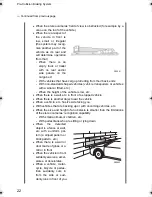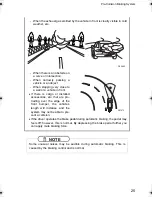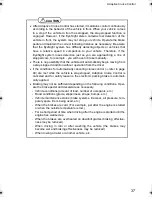
Adaptive Cruise Control
36
⇒
Continued from previous page
- When the vehicle in front is
not directly ahead of your
vehicle and is shifted to
one side
- When there is an obstacle
at the side of the road
- When the relative speed
difference compared to the
vehicle in front is large
- When a vehicle cuts into
your lane in front of you
- When the distance between
vehicles is extremely short
- When your vehicle is drift-
ing within the lane
- When driving on a bumpy
or unpaved road surface
- When driving on a road
with extremely narrow lanes, such as when traffic restrictions are in
effect or in areas where construction work is taking place
- When normal driving has become compromised due to an accident or
malfunction
- When extremely heavy cargo is loaded in the cargo area, rear seat or
trunk of your vehicle
•
There are limits to the capabilities of Adaptive Cruise Control. Even when
the vehicle in front is detected, the system may not be able to decelerate in
time in cases such as when the difference in speeds is large or when the
vehicle in front decelerates suddenly. Operate the brake pedal and decel-
erate as necessary.
•
If the buzzer sounds frequently, do not use Adaptive Cruise Control.
•
Even when the following distance is short, the “brake more” warning may
not activate in the following cases.
- When the relative speed difference compared to the vehicle in front is
small (the two vehicles are travelling at almost the same speed)
- When the vehicle in front is traveling faster than your vehicle (the follow-
ing distance is gradually increasing)
- When another vehicle cuts into your lane very close to your vehicle
- When the vehicle in front decelerated suddenly
- When there are repeated uphill and downhill grades
S01977
S01978
B2522BE-A.book 36 ページ 2015年5月15日 金曜日 午後12時22分
Summary of Contents for 2016 Outback
Page 99: ...98 MEMO ...
















































